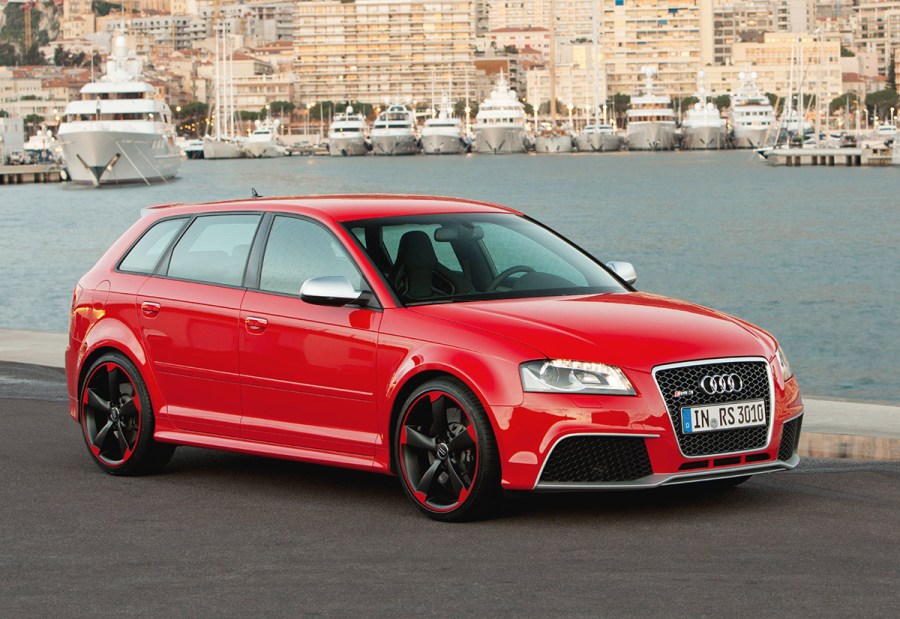The ‘bahn-storming Audi RS3 8P was a gamechanger for the hot hatch market and has remained at the top of the performance car tree ever since. With early models now available for less than £15k, it’s one of the best used cars to buy for the money. Here’s how to buy a good one.
Before 2011, hot hatches had been locked in an automotive arms race that saw their manufacturers nibbling at each other’s toes with models deigned to continuously one-up their competitors. They were content to rely on these little wins to keep their respective models on top. But when Audi decided to step up to the plate in 2011 with the launch of its first hatch to wear the RS (‘RennSport’, German for Racing Sport) badge, it threw the rule book out of the window. The first of this new line-up was based on the already popular, but luke warm rather than truly hot, S3.
Introducing the Audi RS3 8P
Back then, the S was still a supremely competent car, and in five-door, five-seat Sportback guise had won numerous awards for its mix of quality, style and practicality, but was never a car to truly mix it with the cream of the hot hatch crop. But the new RS3 (designated 8P) was a different beast entirely. It didn’t just up the ante on its rivals, it went all-in, blowing away the competition with the most powerful, fastest and most luxurious hot hatch yet. At £39,930 it was far from the cheapest, but with a 2.5-litre turbocharged straight-five engine lifted from the TTRS, it produced a whopping 335bhp and 332lb ft of torque, setting a new benchmark for hot hatch performance.
This beast of a motor was also mated to a slick shifting seven-speed S-tronic gearbox with launch control and the legendary quattro four-wheel drive system, providing the RS3 with a blistering 0-62mph time of just 4.6 seconds. These brawny stats allied to the sporty yet sophisticated five-door Sportback body and a quality, tech-laden interior spawned a new era of hyper hatch.

Appeal
The 8P RS3 is still revered by performance car enthusiasts today, helped no doubt by its immense tunability, a trait that is enhanced by a wealth of aftermarket parts and supported by respected tuning companies the world over. Devoid of the PPF filters that strangle the power potential and orchestral voice of the five-cylinder powerplant in subsequent generations, the first generation RS3 can be tuned to well over 500bhp with little more than bolt on modifications while still retaining its impeccable road manners.
With only 750 RS3s allocated to the UK market over its two-year production run, before it was replaced with the updated 8V model in 2015 (originally it was destined to be just 500 but a further 250 were released due to demand) it’s actually a pretty rare model too, which only serves to increase its popularity among fans even more. If you can find one, here’s what you need to look out for it you want to get a good one…
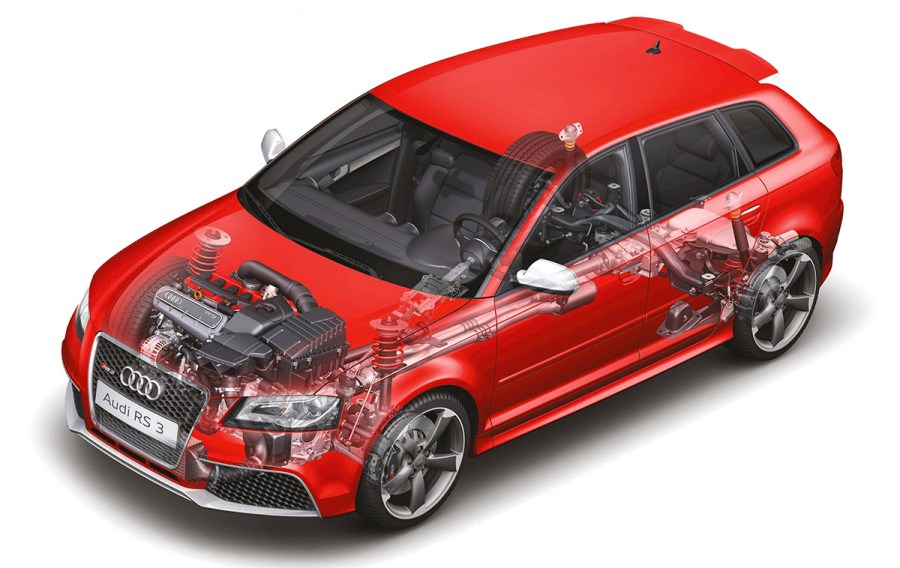
Audi RS3 8P most common problems
- Broken driveshafts – Launch control is great for getting off the line like a scolded cat, but puts the driveshafts under immense strain. Owners who like to launch their RS3’s from every set of traffic lights will need to prepare to replace the shafts, or the propshaft bolts, on fairly regular basis.
- Gearbox problems – The RS3’s twin-clutch DSG gearbox makes for lightning fast shifts, but does have its issues, namely a jerkiness in gearshifts, intermittently going into neutral or losing reverse. These are usually accompanied by an illuminated PRNDS light and an EML and signal a problem with the mechatronic unit.
- Squeaky brakes – The OEM brake pads are notorious for squealing like a stuck pig. A dab of Copaslip might help, but if not, replacements are easy to find and install and should sort out the issue while adding extra bite.
- Haldex issues – The Haldex setup is an earlier version of that found in the Mk 7 Volkswagen Golf R and can get gunked up in a surprisingly short time without regular servicing. Audi recommends an oil change at 40,000 miles but most specialists recommend doing at 20,000 mile intervals.
Audi RS3 8P Pros
- The turbocharged five-cylinder engine is one of the truly great powerplants. It sounds great, goes like stink and has endless tuning potential.
- Excellent ride and handling with the all-weather capability of the legendary quattro all-wheel drive system.
- Luxurious and well-built Nappa leather interiors that are a cut above most other hot hatches.
Cons
- With only 750 models released to the UK market, finding one for sale can be tough, then you’ve got to look out for a good one.
- Tyres and brakes can take a beating and are expensive to replace.
- The cool and classy looks may be too subtle for some when it comes to a ballistic hot hatch.
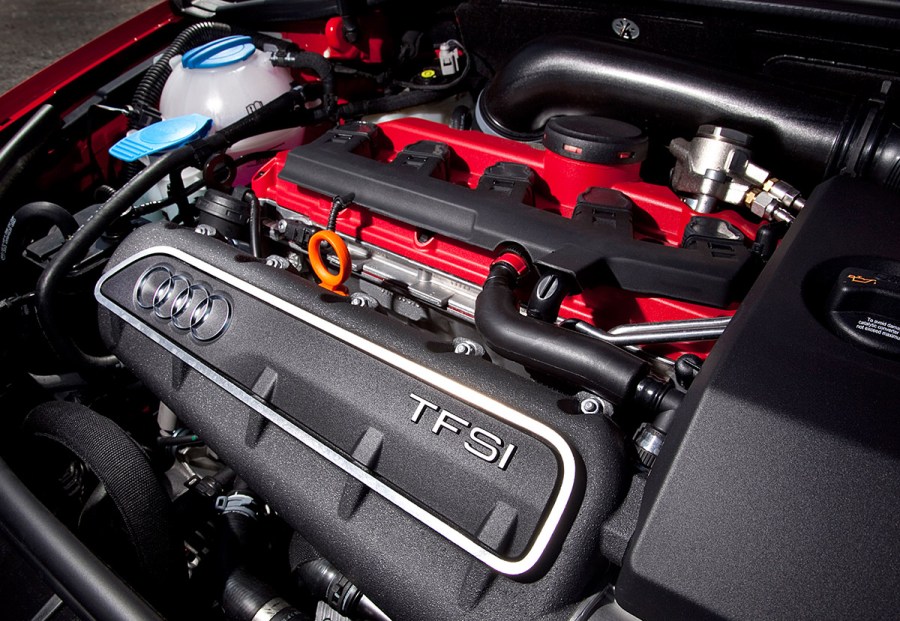
Areas to look out for when buying an Audi RS3 8P
Engine
The RS3 shares its potent EA255 powerplant with the TTRS. Transversely mounted, the compact dual overhead camshaft 20 valve units were based around a reinforced cast iron block, making them incredibly robust and a great base for aftermarket tuning. Lightweight aluminium alloy was used for the head, pistons and conrods, while a B03G turbocharger ran at up to 1.2 bar of boost through an uprated intercooler. This was enough to produce 335bhp and 332lb ft of torque which was available from as low as 1600rpm. This can deliver up to 35mpg on prolonged motorway cruises, but can easily drop into single figures when using the motor’s full potential, so you only have yourself to blame for frequent visits to the petrol pumps.
Strong and reliable if maintained correctly, the five-cylinder lump makes a great noise too, unfiltered by a lack of restrictive PPF filters that are found in more modern RS3 variants. But any potential purchase must have a full service history with oil changes carried out every 10,000 miles. This is essential to prolong chain and tensioner life. You can tell if these have seen better days as they can emit a rattling noise on start up. Ignition coils are also known to throw up some issues and its recommended that all five are replaced together to ensure equal resistance.
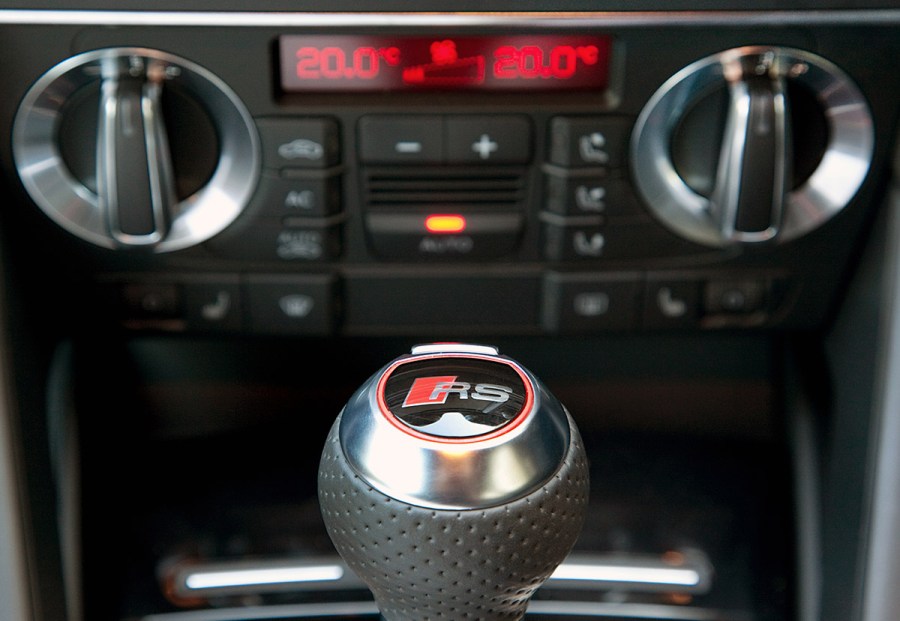
Transmission
The RS3’s quattro all-wheel drive system is in fact a modified Haldex multi-plate clutch arrangement which sends power predominantly to the rear wheels. The seven-speed dual-clutch gearbox was designed for high performance engine outputs up to 443lb ft, so it should handle the RS3’s torrent of torque without issue. On the test drive check that all gears engage cleanly, and watch for other common issues including faulty Haldex clutch system pumps. These are highlighted by repeatedly illuminating the traction control light. Leaks around the bevel boxes or drive shafts should be replaced under warranty on later cars.
However, whatever you do, don’t skimp on servicing and maintenance and ensure the S-Tronic oil and filter services are carried out every 20,000 miles. Picking a car where these have been missed could prove costly. The prop shaft coupling bolts can also be a weak spot if the car is regularly launched, but upgraded prop bolt kits are available.
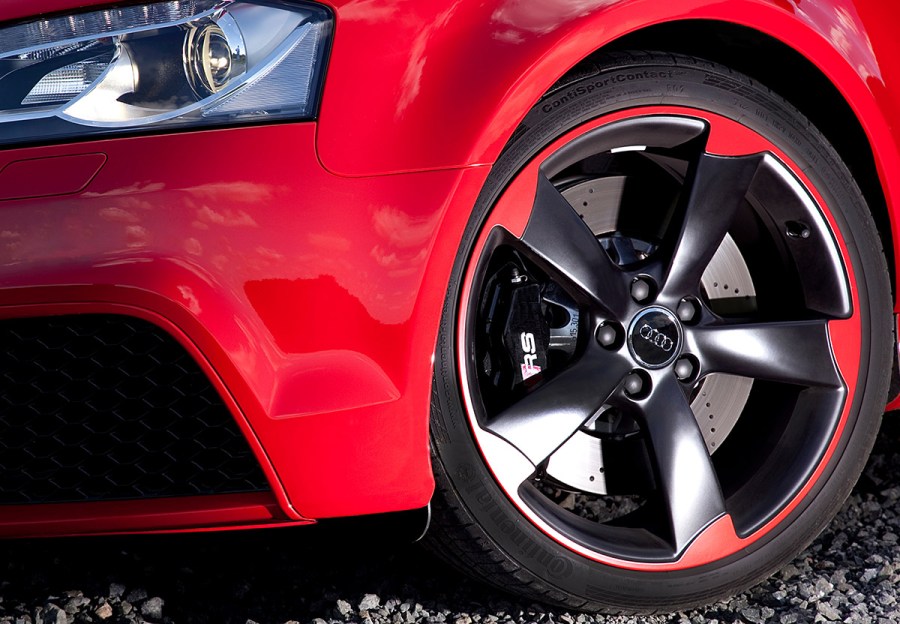
Suspension
The standard suspension is good and is not known to have any inherent issues, although can promote mild understeer. To address this, many RS3 owners opt for a thicker rear anti-roll bar to dial out a this characteristic. Owners that regularly venture on track may have already changed the OEM springs and dampers for coilovers, so be sure to check that these are from a reputable brand and check tyre wear to see if the geometry is aligned correctly. On a test drive, listen for clonks or noises from the rear of the car. This could suggest that the bushes are on their way out. Also, check that the rear shock absorber mounts have been changed, as early cars were fitted with the incorrect items from the factory.
Brakes
With so much grunt on tap, the RS3’s brakes do take a hammering. Luckily, they come with a decent set of four-piston calipers from the factory. However the 370mm discs are known to squeal a lot, although this can often be sorted with a dab of Copaslip or by fitting uprated discs.
Wheels
The OG RS3 came with new 8x19in S-arm rotor design cast alloy wheels with a two-tone machine polished titanium finish and were equipped with front tyres that were wider than the rears to improve front-end bite and reduce understeer. Fronts should be 235s with smaller 225s at the rear. Check for signs of kerbing or corrosion and that the tyres are from a quality manufacturer and have no signs of damage to the side walls or inconsistent wear patterns on the tread, as this could indicate an issue with the suspension or it’s alignment.
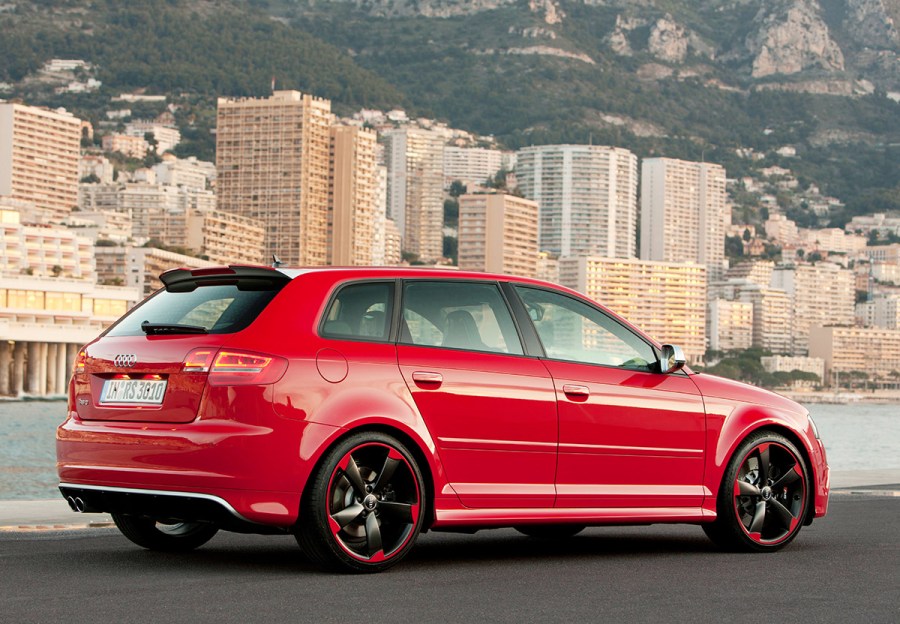
Audi RS3 8P Model timeline
- 2010 – New RS3 model revealed online in November.
- 2011 – Physical launch of the car happens at Geneva Motor Show in March.
- 2011 – RS3s hit the showroom floors in April with 500 models available for the UK.
- 2012 – An additional 250 examples are made available to UK customers due to high demand.
- 2012 – Production of the RS3 8P ends in December.
Audi RS3 8P Prices
- 2012 Audi RS3 8P – 99,642 miles – £13,975
- 2011 Audi RS3 8P – 65,039 miles – £16,500
- 2011 Audi RS3 8P – 49,921 miles – £18,995
- 2012 Audi RS3 8P – 39,130 miles – £23,250
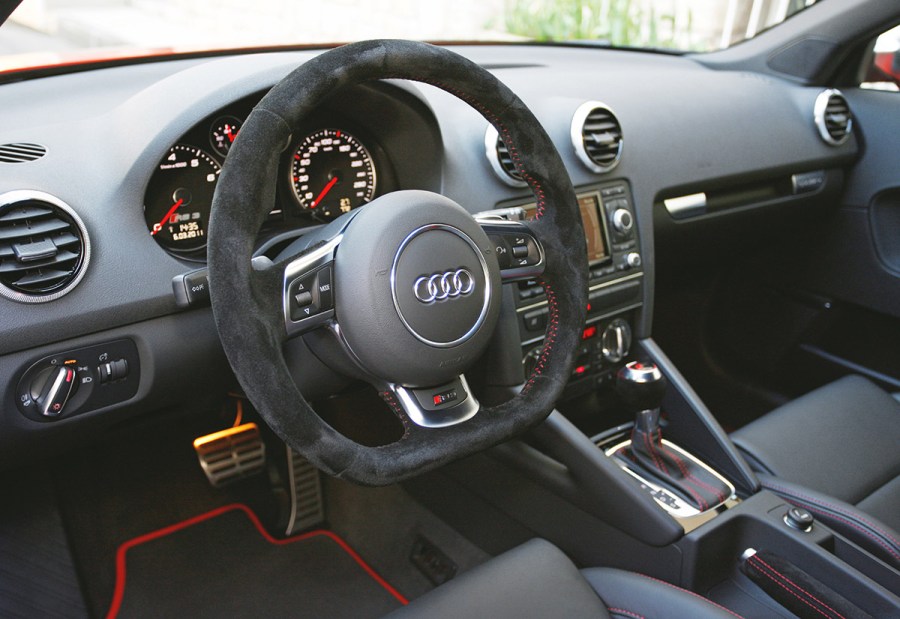
How to launch an Audi RS3 8P
The Audi RS3 8P came with a tantalising new feature that owners could employ to reduce their 0-60mph times and help them at the traffic light GP. Launch control is activated by putting your left foot on the brake, turning off ESP, selecting Sport mode on the dash and gearbox and pushing the accelerator to the floor. The revs should rise but be held by the electronics at 3,000rpm, while the engine rumbles and pops like a pit bull straining at the leash. When you’re ready, simply lift off the brake and feel the G-forces as you are catapulted to the horizon. Simples!
Words: Dan Sherwood.

